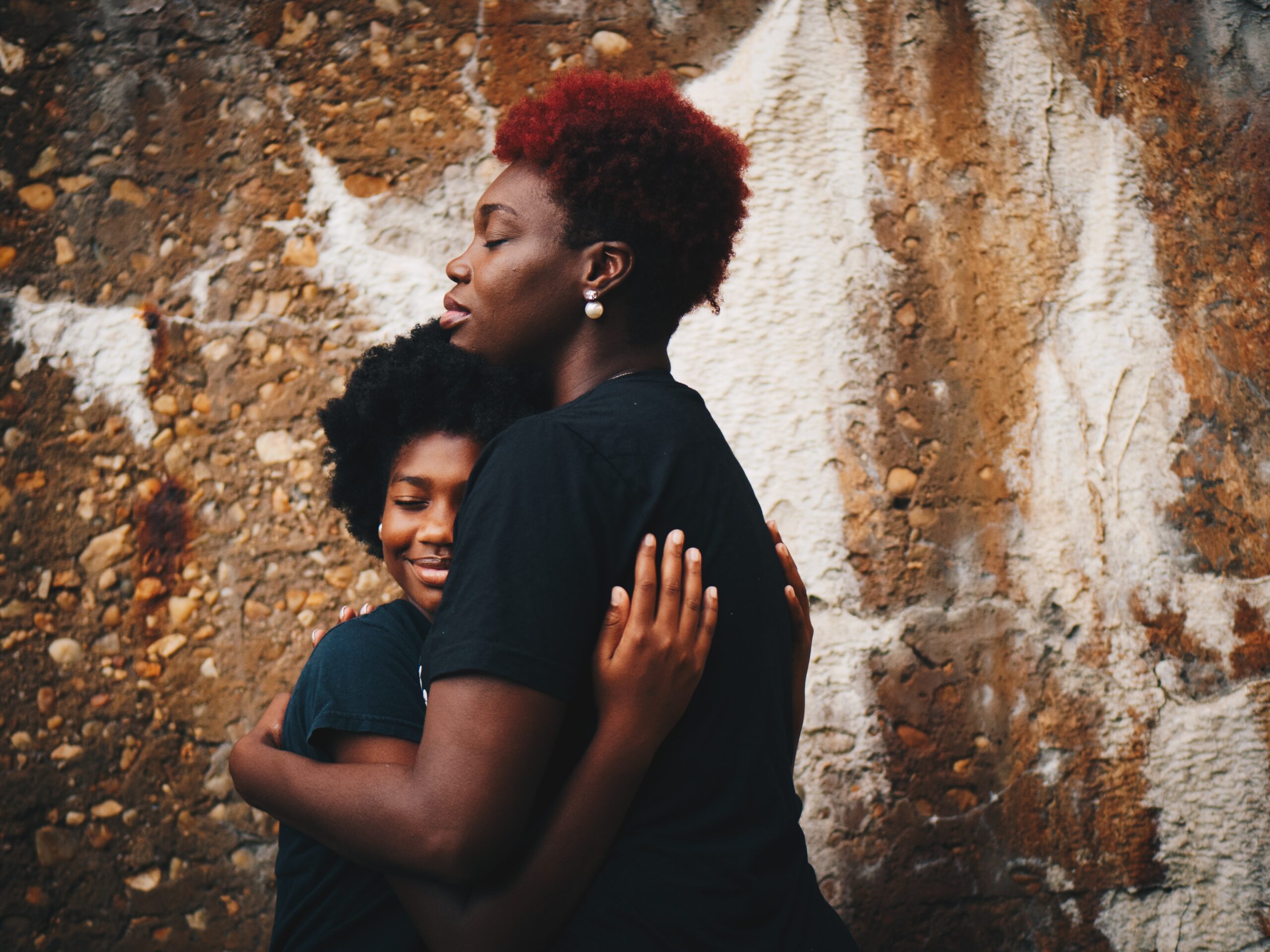Learn the proven healing effects of the hug and how hugs can be a tangible form of consolation and support for the many grieving the victims of the Uvalde and Buffalo mass shootings.
It feels like since the pandemic, the world in which we live has only gotten darker, more depressing, and as of recently, starkly more evil.
As unconscionable mass shootings continue to dominate news headlines, one after another, most recently involving 19 innocent schoolchildren and two teachers in Uvalde, Texas, my first thought is, there are no words.
My second thought, though, is: what can we do to provide support, not just to the families directly impacted by this massacre, but the entire country? What action can we take to incite positive change?
The truth is, we are all in mourning. We are all grieving. We are all processing unfathomable evil. We are all holding our babies a little tighter. We’re all being more vigilant and have our guards up in public – at all times, really. We’re all trying to make it through another work day without breaking down.
We have, in many ways, lost our ability to be soft, lean into joy, and have instead let fear dominate most of our decisions, putting something as simple as showing affection to someone you care about on the back burner, along with showing any semblance of vulnerability.
The darkness in this world has hardened all of us. Years of practicing social distancing robbed many of their sense of community and connection with others. As a Grief Counselor who has helped hundreds of people navigate grief, there is one almost effortless but largely forgotten way we can bring hope to humanity again.
Will you be brave enough to make the first move?
There is Healing Power in the Hug
According to many studies, hugging therapy is a powerful way to promote healing. In fact, hugging (along with laughter) is linked to healing sickness, disease, loneliness, depression, anxiety, and stress.
A hug can indicate support, comfort, and consolation, particularly where words are insufficient.
A hug usually demonstrates affection and emotional warmth, sometimes arising from joy or happiness when reunited with someone you love. A hug can range from a brief one-second squeeze, with the arms not fully around the friend to an extended period of holding one another.
Energy is exchanged during hugs. This energy is a giving force to grievers. When they are weak, tired, and feel that they can no longer carry on, the energy from your hug may just give them the little bit of spark they needed to keep going.
Without saying a word, this energy assures them that you are there with them. That you see them. That you know they are in pain at that moment. That in fact, you are sharing this pain with them.
Hugs are not just for Care Bears or your great aunt before church on Sunday. Hugs are a proven way to facilitate healing for both participants and provide tangible comfort to someone in the throes of grief.
How to Give Someone a Hug
As a Grief Specialist, I often tell grievers that grieving on their own terms is instrumental to their own healing. Maybe this means wanting to be silent or spending time alone. But what I often find is that grievers want comfort and consolation, but don’t know how to ask for it. In fact, they are desperate for it.
So, if you feel led to offer someone a warm embrace, I say do it! Here are just a few things to keep in mind when you do:
- Ask a griever if they would like a hug (just grabbing them out of nowhere can come across as creepy).
- Do give a firm hug.
- Do not pat them on the back. We call this burping. You are not burping a baby. Go in for the real thing.
- Do hold your position for a while.
- Give the griever the option to remain engaged in the hug for as long as they need it. Sometimes, a good hug can be a very safe place for the griever, and they will let go of the intense emotions they have been bottling up inside.
- You should be ok with this if it happens. Don’t say anything, just keep hugging.
- When you feel the shoulders of the griever release, almost slightly descending, this is your sign that they are done with the hug. You can now let go.
- Keep in mind that you may not need to say a word. Just be there. Look them straight in their eyes. Let the griever speak first. This way, you will know for sure if they wish to talk.
Hug it Out
It’s time to show our humanity to one another again. It’s time to stop letting politics divide us. It’s time to be the change we wish to see in the world. It’s time to be open to the idea that people are inherently good and there is certainly more of us in the world than there is evil.
Let’s offer our community a safe space. In a world hellbent on keeping us angry and at odds with one another, let’s soften our hearts a little.
Let’s bring the hug back.
If you have been affected by the back-to-back horrific mass shootings recently, you are not alone. We see you, we know you’re hurting, and want to offer you a safe place to share your pain and feel supported. Contact us today to set up a free discovery call and spend some time with us – we’re here for you.
Sharon Brubaker is a certified Life Coach and credentialed Grief Specialist who, along with her team, teaches women who are grieving how to process their thoughts and emotions. To learn more about navigating grief, listen to her podcast here or download her free eBook, The Griever’s Guide, which equips you with the tools to live life after grief; because no griever should have to navigate a broken heart on their own.




